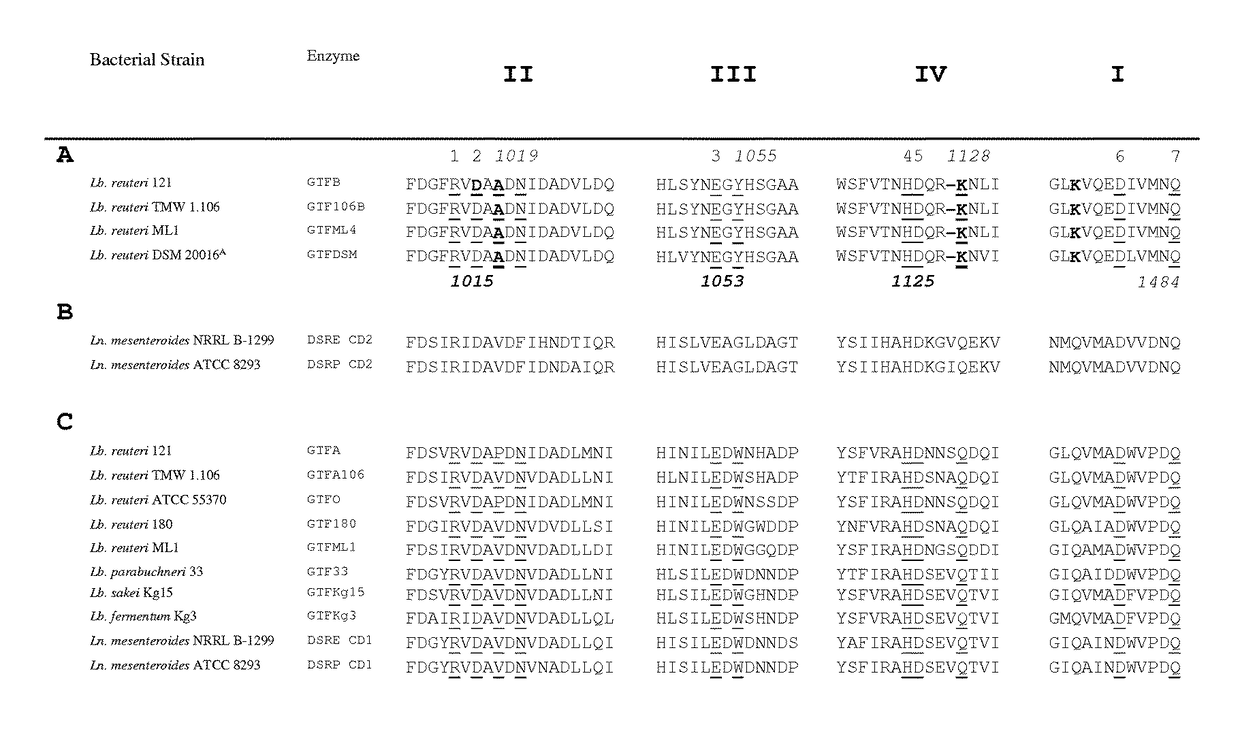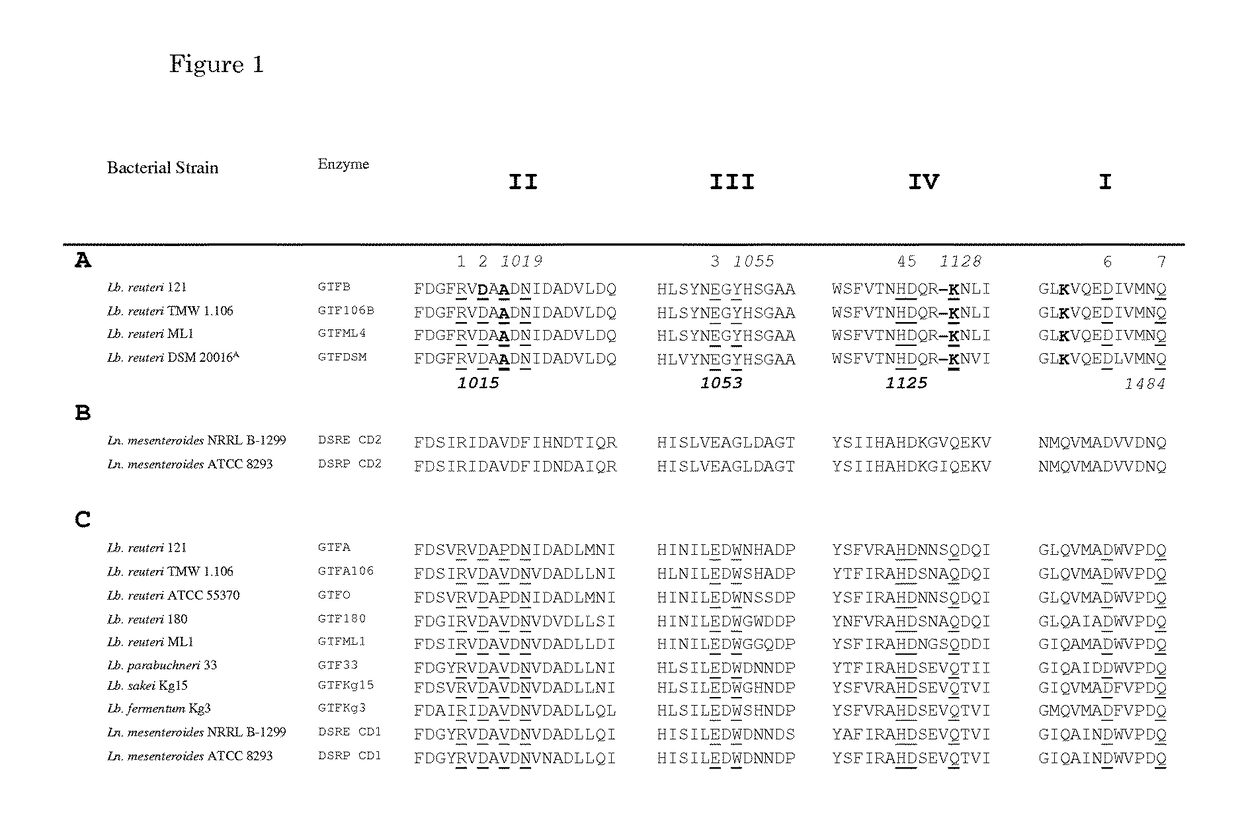Glucooligosaccharides comprising (alpha 1->4) and (alpha 1->6) glycosidic bonds, use thereof, and methods for providing them
a glycosidic bond and glucosidic technology, applied in the field of polyand oligosaccharides and their nutritional effects, can solve the problems of insufficient glucosidic bonding, insufficient glucosidic bonding, and insufficient glucosidic bonding,
- Summary
- Abstract
- Description
- Claims
- Application Information
AI Technical Summary
Benefits of technology
Problems solved by technology
Method used
Image
Examples
Embodiment Construction
[0012]The present invention provides further means and methods for the (enzymatic) modification of starch, starch derivatives and / or MOS of different chain length in order to change their functional properties and enhance their nutritional value.
[0013]It was surprisingly found that these aims can be met by the use of an α-glucanotransferase of the GTFB type of glucansucrases, member of glycoside hydrolase family GH70whereas glucansucrase enzymes catalyze conversion of sucrose into α-glucan poly- and oligosaccharides, it was previously reported that GTFB is not reactive with sucrose at all (Kralj 2004). It is disclosed herein that GTFB displays a high activity towards gluco-oligosaccharides comprising (α1→4) linked glucose residues, such as malto-oligosaccharides (MOS). GTFB catalyzes a disproportionating type of reaction, shortening one substrate molecule and elongating a second substrate molecule. Both products can be substrates again in the next reaction. GTFB activity can thus yi...
PUM
| Property | Measurement | Unit |
|---|---|---|
| temperature | aaaaa | aaaaa |
| temperature | aaaaa | aaaaa |
| temperature | aaaaa | aaaaa |
Abstract
Description
Claims
Application Information
 Login to View More
Login to View More - R&D
- Intellectual Property
- Life Sciences
- Materials
- Tech Scout
- Unparalleled Data Quality
- Higher Quality Content
- 60% Fewer Hallucinations
Browse by: Latest US Patents, China's latest patents, Technical Efficacy Thesaurus, Application Domain, Technology Topic, Popular Technical Reports.
© 2025 PatSnap. All rights reserved.Legal|Privacy policy|Modern Slavery Act Transparency Statement|Sitemap|About US| Contact US: help@patsnap.com



